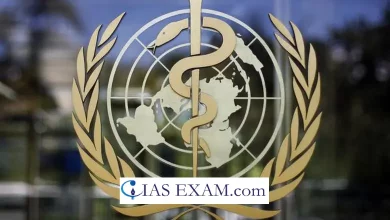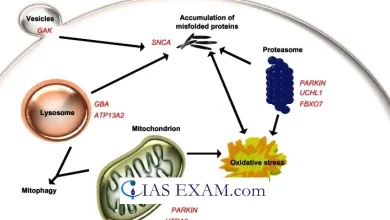Widal test obscures India’s Typhoid Awareness
Syllabus: Health [GS Paper-2]

Context
The Widal test is a rapid blood test used to diagnose typhoid infection, but it has several limitations that make it an inappropriate diagnostic tool. Despite its flaws, the Widal test is widely used in India, leading to misdiagnosis, mistreatment, and a lack of understanding of the true burden of typhoid in the country.
How Typhoid Fever is Diagnosed
- The laboratory confirmation of typhoid is isolation of bacteria from a patient’s blood or bone marrow, and growing them in an incubator.
- Samples of stool and urine are also usable albeit with lower sensitivity.
- Nevertheless, such studies can hardly be conducted in the smaller clinical settings because of their disadvantages that are the access to specialised equipment and ability to use competent personnel.
Widal Test
-
- The Widal test is a quick blood test for the identification of antibodies produced by the body during the immune response of typhoid fever caused by bacteria.
- It is a single-use test which can be performed at the point of care by simple skills or infrastructure in place.
- Limitations of the Widal Test
- The Widal test is a blood test that identifies antibodies against the bacteria causing intestinal fever. The extent of these antibodies can be used as an indicator of the severity of the disease.
- Nevertheless, an instance of diarrheal episodes either positive or negative in nature can assuredly be conveniently confused with typhoid infection.
- Diagnosis of active infections also requires the healthcare providers to perform the testing of serum samples taken no sooner than 7-14 days apart.
- This kind of research is usually quite difficult and time-consuming. Furthermore, the control measures do not maintain the same standards complicating the method of testing and results.
- On the other hand, the test may react positively for other infections and in cases of people being vaccinated for typhoid fever, leading to wrong diagnosis.
Consequences of the Widal Test’s Use
- Though Widal Test is being used as a diagnostic test in India as well, it is known for its false results, which make it difficult to assess what really is the carriage burden of typhoid in India.
- Moreover, an inadequate understanding of the adequate time to pick up a blood sample, also associated with inconsistency in kits and poor quality control, worsen the situation.
- To make the whole thing worse, the patients have to pay for tests and treatment themselves, which creates sky-high physicians’ bills.
- The irrational application of antibiotics makes the illness more resistant to medical progress.
Solutions
- The Widal test is lagging in its ability and so needs to be replaced with some better point-of-care tests Provision of the best practice heuristics that will give a rational basis for diagnostics and resulting treatment customised on local/regional data is the option to think of for clinicians.
- Enhancing the availability of the more accurate diagnostic tests as well as affecting the aetiology of the disease through consuming safe food, water and sanitation are significant competencies.
- Most importantly, surveillance needs to improve so that the development of drug resistance is more effectively recognized, and the environment should be watched constantly, with data shared with open corridors.
Conclusion
The Widal test’s limitations lead to misdiagnosis, mistreatment, and a lack of understanding of the true burden of typhoid in India. To address this, better diagnostic tests, improved access to care, and a focus on preventive measures are necessary. Additionally, surveillance and data sharing are crucial to combat antimicrobial resistance and preserve the efficacy of antibiotic therapies.
Source: The Hindu
UPSC Mains Practice Question
Q. Discuss the implications of the Widal test’s limitations for India’s public health initiatives, including challenges in accurate disease surveillance, treatment decisions, and the effectiveness of preventive measures.





.png)



